Fast and fit: How menstrual cycle is a female athlete’s secret weapon
The Jillaroos are not just leading the way on the field, but off it as well. The women’s rugby league team have “tackled the taboo” of female sport, using a top class education program to ensure their athletes know how the menstrual cycle effects performance.
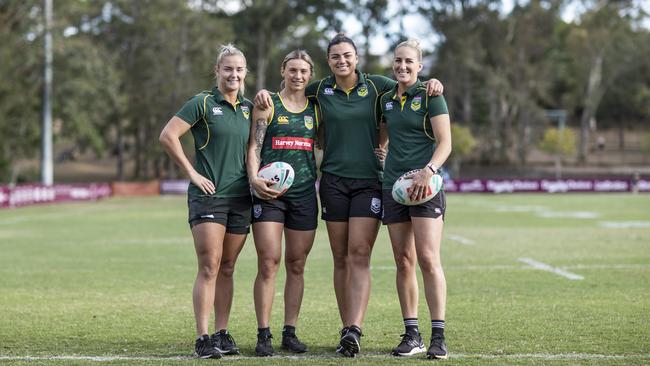
QWeekend
Don't miss out on the headlines from QWeekend. Followed categories will be added to My News.
WHEN Simon Buxton walked into his first Australian Jillaroos camp nearly four years ago, the then Queensland police officer was starting with a blank canvas.
It was November 2016 when Buxton was appointed the part-time strength and conditioning coach for the women’s rugby league squad, but it was clear from the moment he started how desperately the team needed him there on a full-time basis.
Only seven of the top 30 players did resistance or weight training. Several athletes struggled to pass a basic beep test. And there was next to no education around the menstrual cycle and how it affected the athletes.
NRLW Brisbane Broncos forced into strict quarantine ahead of season
NRLW 2020: Women’s rugby league stars putting NRL players to shame
State of Origin: How the daughters of Wally Lewis and Rohan Hancock are making their own history
As Buxton says, “it was still very much an amateur code with limited resources.”
In the following 12 months, Buxton – along with Jillaroos coach Brad Donald and assistant coach Jamie Feeney – had the women at their fittest and strongest, with the Auckland Nines title, a Test match victory over New Zealand and the 2017 World Cup trophy all under their belts.
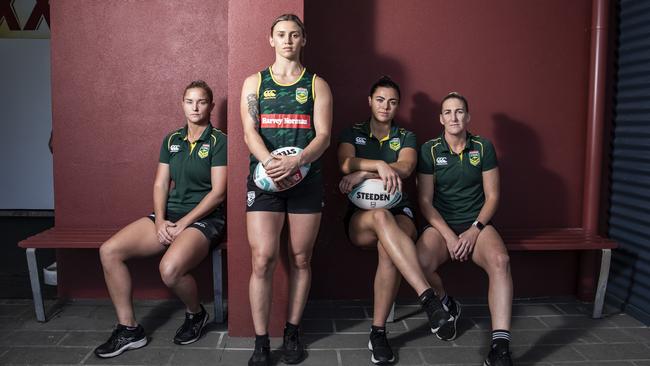
They were deemed the No. 1 team, but there was still plenty of work ahead.
Fast forward to 2020, the Jillaroos have some of the best training programs in elite Australian sport thanks to their coaching staff and have won 23 of their past 24 matches.
They are now preparing for their 2021 World Cup defence under the theme “get comfortable with being uncomfortable”.
But for Buxton, one of the key areas in getting his athletes to where they are now has been in tackling the “taboo”.
“When I first started, there were huge areas we could improve on,” he says.
“Early on we identified that there was very little education around the menstrual cycle and the effects of the hormone contraceptive pill.
“I didn’t have an understanding of it either … it wasn’t an area of expertise for me.
“But I was really surprised by how little they knew and how little attention they paid to their cycles.
“It’s another aspect of their preparation where they can be professional and track their own cycle and know why they feel the way they do.
“They know how much they should drink in terms of fluids or what they should eat or how they respond to training. But they didn’t know how this affects them. This is just about being in tune with their own bodies.”
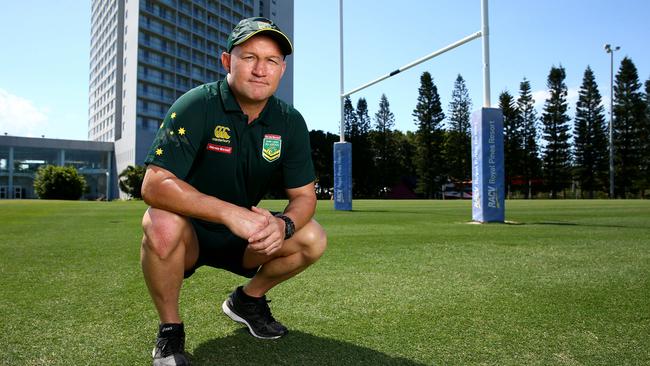
TO help their athletes understand their cycles and how it affected their health, their training and their performance, one of the first things the Jillaroos coaching staff did was enlist the services of Griffith University.
Associate Professor Clare Minahan had already been working within this area for the past 15 years after previously researching gender differences across sports science.
Tired of constantly coming to the conclusion that female athletes were “not as fast, not as strong and not as fit” she started looking into how to instead optimise performance in women and female-specific physiology.
“One thing incredibly unique to women is the menstrual cycle,” Minahan says.
“It affects all sorts of biological functions so we started to look at how fluctuations affected physiology and in turn affected performance.
“We then got together with the Australian Jillaroos and started to have a look at monitoring their menstrual cycles over time.”
Together, the Jillaroos coaching staff and Minahan’s team started an education program and tracking system for the Australian women, using an app called SMARTABASE.
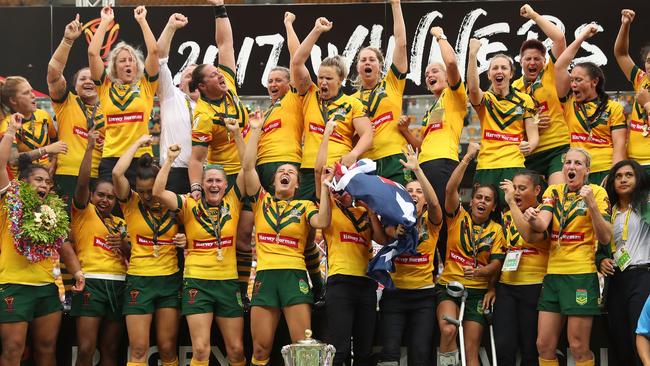
“We started out by giving the elite and development players education around their cycle and the long-term health problems that could arise if they didn’t get their period on a regular basis,” Buxton says.
“Griffith University performed a survey with all the players and looked at how much they knew, how many were on the pill or using contraception and how long their cycle was.
“That’s how it all started and the main thing we took out of the education piece was that two of our elite athletes were having health problems.
“One hadn’t had her period for six months and thought that was normal but she’d also had repeat fractures and lower limb injuries … There are some connections that if you don’t have your period for long periods of time, it does impact on your bone health.
“Another was put on the pill at 16 but women don’t reach peak bone mass until their early 20s. What happens is you get put on the pill and it suppresses your natural hormones. It can affect your bone health. She’s another one that’s had repeat fractures of the lower limbs.
“It was like a light bulb moment for the players and us.”
There were several myths that the Jillaroos started to bust along the way.
Buxton discovered that in the 1990s and 2000s, players would take the contraceptive pill purely so they could skip their periods on game days.
It stemmed from the idea that having your period could hinder your performance.
Many of the current players also thought it was normal that active women didn’t get their periods at all, that it was a “rite of passage” to show how hard you trained, while others hated talking about their cycle, still under the impression it was indeed a “taboo” subject.
But as Buxton and Minahan discovered, a lot of these ideas were actually having a more detrimental effect.
Through SMARTABASE, they were able to track and help the players individually.
“We have 33 athletes who report in daily,” Buxton says.
“They basically talk about how sore they are from training and playing, they talk about their mood and how they’re feeling, and do a women’s health questionnaire in regards to their period, if they have pain, bloating, etc.
“It’s allowed us to educate the players. Just because you have your period on game day, it doesn’t mean you can’t perform. It’s changing their mindset around that … that they can train through it and they are actually at their peak.”
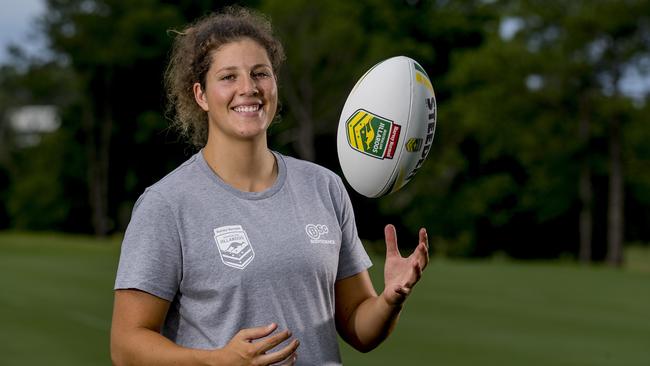
JILLAROOS forward Chelsea Lenarduzzi is somewhat of a perfectionist.
A self-proclaimed “psycho” with her recovery efforts, the Gold Coast-based Lenarduzzi says as an elite athlete she is always trying to find ways to give herself an advantage over her opponents.
This attitude is what led her to carefully track her cycle and watch how it affected her performance and training.
The 24-year-old, who debuted for the Jillaroos in 2019, grew up doing shot put, winning three National Titles before switching full time to rugby league.
She remembers times in her shot put career in which she felt “really slow and sluggish” and she would get frustrated with herself for failing to hit certain targets at the gym.
As she moved into rugby league, playing with the Burleigh Bears and Brisbane Broncos, she started to research the impact of her menstrual cycle and was assisted by Minahan’s PHD student, Karlee Quinn.
“I started to learn a few things about myself,” Lenarduzzi says.
“At certain points of my cycle, I get really hot for a few days. My temperature rises. It means I need to drink more water and have a cold shower, especially to get to sleep. I need to make sure I’m cooled down, even before training, otherwise I feel hyped up too much.
“At other times of my cycle, I find I have less energy so I can’t perform to the same extent. It’s about mentally going easer on yourself and understanding there’s a reason for why you might not be feeling the best you can.”
Lenarduzzi says one of the hardest things for her however was always being associated with sports growing up and yet never being educated on the impact her menstrual cycle could have on her health and performance.
She says it’s scary how taboo it remains in 2020.
“It comes back to the idea you’re not meant to talk about your period,” she says.
“It’s ridiculous we don’t talk about it. When you’re in high school, or even now, there will be women or girls that want to take the day off training because they have their period and that idea can be supported by parents.
“Obviously there are some with genuine medical issues but with general symptoms, there are a lot of strategies that can help.
“A lot of the times you don’t get taught these unless you go searching yourself. It’s very, very important to get the information out there.
“Especially in rugby league, there’s a lot of shyer girls and they have this idea that people don’t want to talk about it, that it’s taboo. But it’s part of your training. You have to do it. If you ignore it, it’s something that could hold you back.”
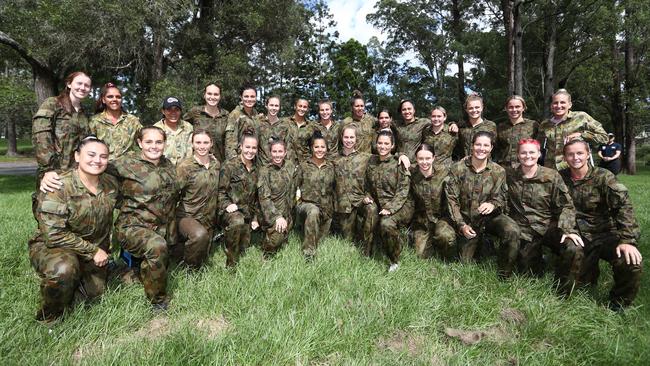
THIS is the one of the goals for female sport at all levels moving forward – to ensure athletes understand their own cycles.
Minahan says so many athletes have “very poor knowledge” and think “it’s normal to not have a cycle, to have pain, headaches or heavy bleeding.”
She says this is what puts the Australian Jillaroos ahead of a lot of other sporting teams and codes, not just in our country but across the world.
“They’ve put up with a lot basically,” she says of women.
“While education programs are gathering momentum and becoming the ‘in thing’ to do, not every team does it well and not every team does it consistently.
“Brad (Donald) and Simon (Buxton) are willing to take the time to get the information they need to make the correct choices.
“They’re in front because of their willingness to do something about it three or four years ago and to maintain that consistency. It was not a knee-jerk reaction to things. They’re really taking it from a player-first approach.
“The information is there but a lot of teams don’t tend to see it as important enough. If we leave it up to young girls, we’re not sure the information they’re getting is high quality enough.
“Sports organisations should be proactive in providing information.”
And Buxton hopes the Jillaroos can set that example so athletes are better prepared into the future.
He says it’s not just important for females, but for male coaches and staff as well.
He says while he did not understand a lot about the menstrual cycle back in 2016, he does now and uses his knowledge to help his players with their health and performance.
He’s helping to break that taboo.
“We have one-on-one interviews with every player and it’s a great forum for us to bring up all those sensitive topics,” he says.
“That’s the most important thing with any female sport. You have to sit down and have these discussions around the menstrual cycle and give them the right information.
“It’s not to tell them what to do, but to give them all the information. If you identify a problem, you refer them on to specialists. That’s what it’s all about.
“It would be irresponsible for a sport not to acknowledge this and not give the education to the players. It’s the same as giving the education around supplements.
“We have a duty of care.”

